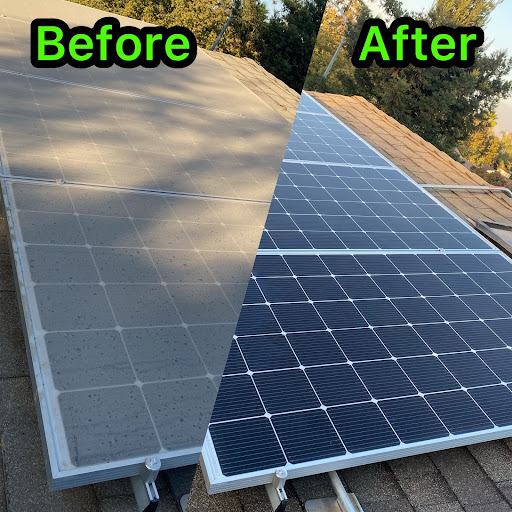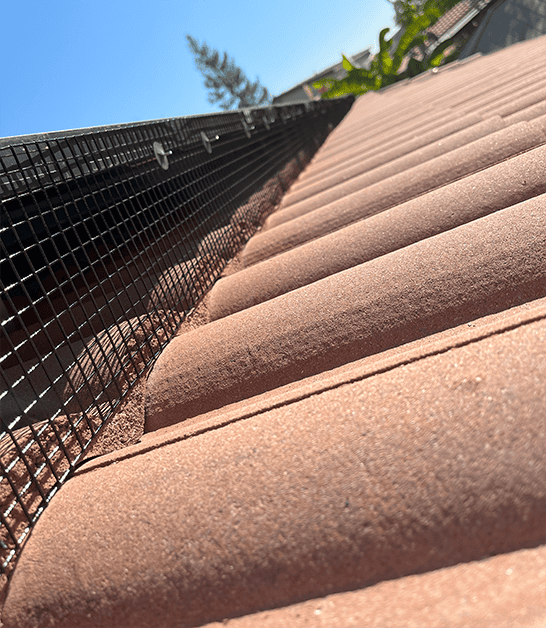Fresno’s Climate and Why It Matters for Solar
Fresno is one of the best regions in the country for solar. With over 275 sunny days each year, minimal cloud cover, and strong year-round production, systems here consistently outperform other areas. But with that sunshine comes dust, ash from wildfire season, pollen, and other debris that can collect on your panels.
Unlike coastal regions where rainfall helps clean panels naturally, Fresno’s dry season can leave your solar panels dusty for months at a time. And if you live near agriculture, orchards, or new construction, your panels may get dirty even faster.
This buildup reduces the amount of sunlight that reaches the photovoltaic cells, which can cut production by 10 to 30 percent in extreme cases. Regular cleaning and basic maintenance help avoid these losses and keep your system performing the way it was designed to.
Solar Panel Cleaning: The Most Important Maintenance Task
If there is only one thing you do to take care of your solar system, make it panel cleaning. Dirty panels are the most common reason homeowners see reduced solar output, especially during the summer months when dust is everywhere.
How Often Should You Clean Your Panels?
In Fresno, most homeowners benefit from cleaning their solar panels two to three times per year. The best times are:
- Spring, after the rainy season but before the heavy pollen sets in
- Late summer, especially after wildfire smoke or dust buildup
- Fall, after harvest season if you live near farmland or orchards
You can either clean the panels yourself with a telescoping pole and soft brush, or hire a professional solar cleaning service. Just make sure no harsh chemicals or high-pressure hoses are used, as these can damage the glass or void warranties.
What Happens If You Never Clean Them?
Over time, buildup from dust, pollen, bird droppings, and smoke residue can lead to a noticeable drop in solar production. If you have never cleaned your panels and your monitoring app shows reduced output, that is usually the first place to look.


Critter Guard: Protection Against Pigeons and Squirrels
While Fresno does not have the same rodent pressure as coastal cities, it is not uncommon to see pigeons or squirrels nesting under solar panels. These pests can chew on wires, leave droppings that damage your roof, or build nests that trap heat and debris.
What Is a Critter Guard?
Critter guard is a wire mesh that is installed around the perimeter of your solar array. It creates a barrier that prevents animals from crawling under the panels while still allowing airflow and drainage.
Installing a critter guard is a one-time upgrade that protects your electrical wiring, roof integrity, and overall system performance. It is especially important if you have noticed:
- Pigeon droppings around your panels or roof
- Nesting activity near your gutters or under eaves
- Chewed wires or broken conduit around your inverter
Critter guards are affordable and can be added to existing systems without affecting warranties.

Monitoring Your System: How to Spot Issues Early
Your solar system includes a monitoring platform that allows you to track performance. This could be a mobile app from your inverter manufacturer or an integrated energy app depending on your battery system. Learning how to read your monitoring data is one of the best things you can do as a homeowner.
Check Your Monitoring App Weekly
It only takes a few seconds to open the app and make sure everything looks normal. Look for trends like:
- A sudden drop in production from one day to the next
- One or more panels showing zero output
- A red flag, offline status, or error notification
If anything seems off, contact your installer or service provider to take a closer look. Catching these issues early can prevent bigger problems and loss of production.
Use the Inverter LEDs as a Quick Visual Check
Most inverters are installed in accessible areas like garages or outside walls. As you walk by them, take a quick look at the LED indicator lights. A green light usually means normal operation, while a red or blinking light may signal a problem.
While the lights do not give detailed information, they are an easy way to do a casual system check without opening an app.

Annual Visual Inspection: A Simple Habit Starting Around Year Five
Although solar panels are designed to last 25 to 30 years with minimal issues, it is a good idea to inspect your system visually once a year starting around year five.
If you are comfortable on a ladder or have roof access, take a look at:
- The solar panels for cracks or visible damage
- The mounting hardware to ensure nothing is loose
- The wire conduit to make sure there are no signs of animal chewing
- The inverter to check for error lights or damaged parts
This inspection can be done in 10 to 15 minutes and can save you thousands in long-term repairs. If you are unsure what to look for or prefer not to go on the roof, many companies offer professional maintenance checkups.
How Supreme Solar and Electric Helps You Maintain Your System
At Supreme Solar and Electric, we offer more than just installation. We support our customers long after the job is complete.
Here is how we help protect your investment:
- Panel cleaning services, offered on a one-time or seasonal basis
- Critter guard installation, especially for homes with ongoing pigeon or squirrel issues
- System monitoring assistance, where our team helps you track and troubleshoot issues
- Ongoing customer support, with real local teams in Fresno and Palm Desert
- Warranty coordination, to help file claims if your system is still under warranty
Because we are a local contractor, we can respond quickly and send out our own technicians — not subcontractors. If there is ever an issue, we are here to help you resolve it.
Tips to Maximize the Lifespan of Your System
If you follow a few simple best practices, your solar system will continue to produce strong power for decades.
1. Keep It Clean
This is the single most important thing you can do. Clean panels equal better performance. If it is been more than six months since your last cleaning, you are probably losing production.
2. Monitor Regularly
Make it a habit to check your app once a week. The earlier you catch a drop in production, the easier it is to fix.
3. Schedule Annual Roof Inspections
A quick visual inspection around year five can help you spot and correct issues before they become serious. You do not need to do this in year one or two, but it is smart to start looking as your system gets older.
4. Install Critter Guard Early
If you live in an area with pigeons, squirrels, or other wildlife, critter guard is a small investment that protects your wiring and prevents fire hazards. The sooner you install it, the better.
The Bottom Line: Solar Maintenance Is Simple but Important
Solar systems require very little maintenance, especially when compared to other major home systems. But that does not mean you should ignore them. A clean, well-monitored system will continue to pay you back for decades, while a neglected one can lose performance quietly over time.
By following the tips in this guide, you can keep your system running smoothly and protect your investment. Whether you clean the panels yourself, hire professionals, or use monitoring alerts to stay informed, these small steps go a long way.
Need Help Maintaining Your Solar System?
Whether you are already a customer or just looking for help with your current solar setup, Supreme Solar and Electric is here to support you.
- Schedule a cleaning
- Add critter guard
- Get help with monitoring
- Book a professional inspection
Reach out today and let us help you protect your solar investment for the long haul.






